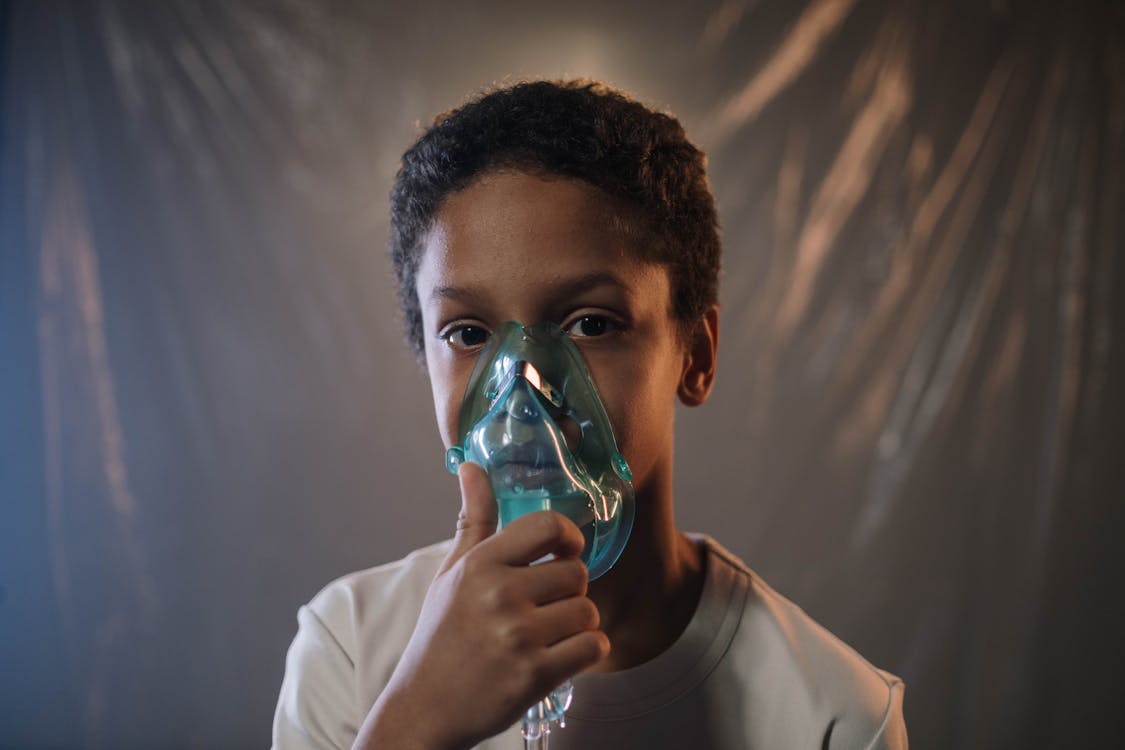When a child is sick or injured, every second matters. As a parent or caregiver, your first thought is, “Where is the nearest children’s hospital emergency room?” In those stressful moments, having the right information can make a big difference. This article is a complete guide to finding and understanding children’s emergency care near you.
We’ll cover what to expect, when to go, how to prepare, and how to find the best care for your child—whether you’re in a big city or a small town.
Why Specialized Emergency Rooms for Children Matter
Children aren’t just small adults. Their bodies, immune systems, and medical needs are different. That’s why they need doctors and nurses trained in pediatric care.
A children’s hospital emergency room is designed especially for kids. It includes:
- Pediatric doctors and nurses
- Child-sized equipment
- Friendly, calming environments
- Specialists for childhood diseases and injuries
If your child is seriously ill or injured, taking them to a general ER may not be enough. Pediatric emergency rooms are better equipped to handle your child’s unique needs.

When Should You Take a Child to the Emergency Room?
It can be hard to decide whether your child needs emergency care. Here are some signs that your child may need to go to the ER right away:
Breathing Problems
- Fast, noisy, or difficult breathing
- Blue lips or face
- Struggling to breathe even when resting
High Fever
- Babies under 3 months with a fever over 100.4°F (38°C)
- Older children with fever above 104°F (40°C)
- Seizures caused by fever
Head Injuries
- Loss of consciousness
- Vomiting after a head bump
- Trouble walking, talking, or staying awake
Severe Pain or Bleeding
- Deep cuts that won’t stop bleeding
- Broken bones or serious burns
- Severe stomach pain
Sudden Behavior Changes
- Extreme drowsiness or confusion
- Inability to wake your child
- Seizures or twitching
Accidents
- Car accidents, falls, or drowning incidents
- Electric shock or poisoning
When in doubt, it’s better to be safe. You can also call your child’s doctor or a nurse hotline for advice.
How to Find a Children’s Hospital Emergency Room Near You
1. Use Your Phone’s Maps App
Search for “children’s hospital emergency room near me” on Google Maps or Apple Maps. Most major cities have at least one pediatric emergency center.
2. Check Your Insurance Provider’s Website
Many health insurance websites list nearby hospitals and clinics that are covered under your plan. Filter by pediatric care.
3. Visit Hospital Websites
Some children’s hospitals offer real-time ER wait times. You can find this information on their official websites.
4. Save Locations in Advance
If you have kids, save the nearest emergency room’s address and phone number in your phone before you need it.

What to Expect at a Children’s Emergency Room
A children’s emergency department is often less stressful than a general ER. Here’s what you can expect:
Triage
When you arrive, a nurse will assess how serious your child’s condition is. This helps the hospital team decide who needs help first.
Pediatric Experts
Your child will be seen by a doctor or nurse trained in pediatric care. These professionals know how to treat children’s bodies and how to calm them during scary situations.
Specialized Equipment
From tiny blood pressure cuffs to child-sized IVs, pediatric emergency rooms are designed with kids in mind.
Family Support
You’ll usually be allowed to stay with your child throughout the visit. Many children’s hospitals also have child life specialists—experts who help children cope with medical stress using play and communication.
How to Prepare for a Visit to the Emergency Room
You don’t always get time to prepare for an emergency, but here are a few tips that can help:
Keep Medical Info Handy
Create a document that includes:
- Your child’s full name, date of birth, and weight
- Allergies
- Medications your child takes
- Any past surgeries or medical conditions
- Insurance details
Pack an Emergency Bag
Keep a small bag ready at home or in your car with:
- A change of clothes for your child
- Snacks and a water bottle (if allowed)
- Favorite toy or blanket
- Phone charger
- Insurance card and ID
Stay Calm
Children react to their parents’ emotions. If you stay calm, it can help your child feel safer.

Children’s Hospitals in Major U.S. Cities (Examples)
If you live in or near a big city, here are some well-known children’s hospitals with emergency care:
New York City
- NewYork-Presbyterian Morgan Stanley Children’s Hospital
- Mount Sinai Kravis Children’s Hospital
Los Angeles
- Children’s Hospital Los Angeles (CHLA)
- UCLA Mattel Children’s Hospital
Chicago
- Lurie Children’s Hospital
- University of Chicago Comer Children’s Hospital
Houston
- Texas Children’s Hospital
- Children’s Memorial Hermann Hospital
Boston
- Boston Children’s Hospital
- One of the top-ranked pediatric hospitals in the U.S.
What If There’s No Children’s ER Nearby?
In smaller towns or rural areas, there may not be a pediatric emergency room close by. In that case:
- Go to the nearest general emergency room immediately.
- Ask the hospital to connect with a pediatric specialist by phone.
- Some hospitals can transfer your child to a children’s hospital after stabilizing them.
After the Emergency Visit: What Comes Next?
1. Discharge Instructions
Before leaving the ER, make sure you understand the doctor’s instructions. Ask about:
- Medications
- Follow-up visits
- Warning signs to watch for
2. Follow-Up Care
Always contact your child’s regular pediatrician after a trip to the ER. They’ll help with ongoing care or refer you to a specialist if needed.
3. Emotional Support
Even after the emergency is over, your child may feel scared or anxious. Offer comfort, answer their questions, and consider counseling if needed.
Insurance and Costs
Emergency care can be expensive. Here are a few tips to manage the costs:
- Know Your Plan: Some insurance plans charge more for emergency room visits unless it’s a true emergency.
- Use In-Network Hospitals: Try to visit a hospital that is covered by your insurance.
- Apply for Financial Aid: Many children’s hospitals offer payment plans or help for low-income families.
- Keep Records: Save all bills, receipts, and paperwork for insurance claims or tax deductions.
Urgent Care vs. Emergency Room: What’s the Difference?
Sometimes, your child may not need the full services of an emergency room. Pediatric urgent care centers treat:
- Mild fevers
- Ear infections
- Minor cuts or sprains
- Cold and flu symptoms
- Rashes and skin problems
If your child is not in serious danger but still needs fast care, an urgent care center may be a better and cheaper option.

COVID-19 and Children’s Emergency Rooms
Many hospitals have made changes due to COVID-19. This includes:
- Mask requirements for visitors
- Screening at the entrance
- Limited visitor numbers
Call ahead or check the hospital’s website to understand their current rules.
How Technology Is Improving Pediatric Emergency Care
New tools and apps are helping parents and hospitals work together better:
- Hospital Apps: Some children’s hospitals have mobile apps with ER wait times, maps, and health records.
- Telehealth: For less severe problems, video calls with a doctor may help you decide whether your child needs to visit the ER.
- Health Monitoring Devices: Smart thermometers and heart monitors give accurate info that doctors can use in emergencies.
Real-Life Experience: A Parent’s Story
Sarah, a mother from New Orleans, shares:
“My 4-year-old son had a high fever and was having trouble breathing. I didn’t know what to do, but I searched ‘children’s hospital emergency room near me’ and found one just 15 minutes away. The nurses were kind, the room was designed for kids, and they explained everything clearly. I was so relieved to be in a place that understood my child’s needs.”
Final Thoughts
Having a sick or injured child is every parent’s worst nightmare. But knowing where to go and what to expect can bring peace of mind. A children’s hospital emergency room near you is more than just a medical center—it’s a place where your child can get the best possible care in a safe, comforting environment.
Take time now to find your nearest pediatric ER. Save the location, learn the signs of an emergency, and prepare in advance. It’s one of the most important things you can do for your child’s health and safety.

2 thoughts on “Children’s Hospital Emergency Room Near Me: A Complete Guide for Parents”